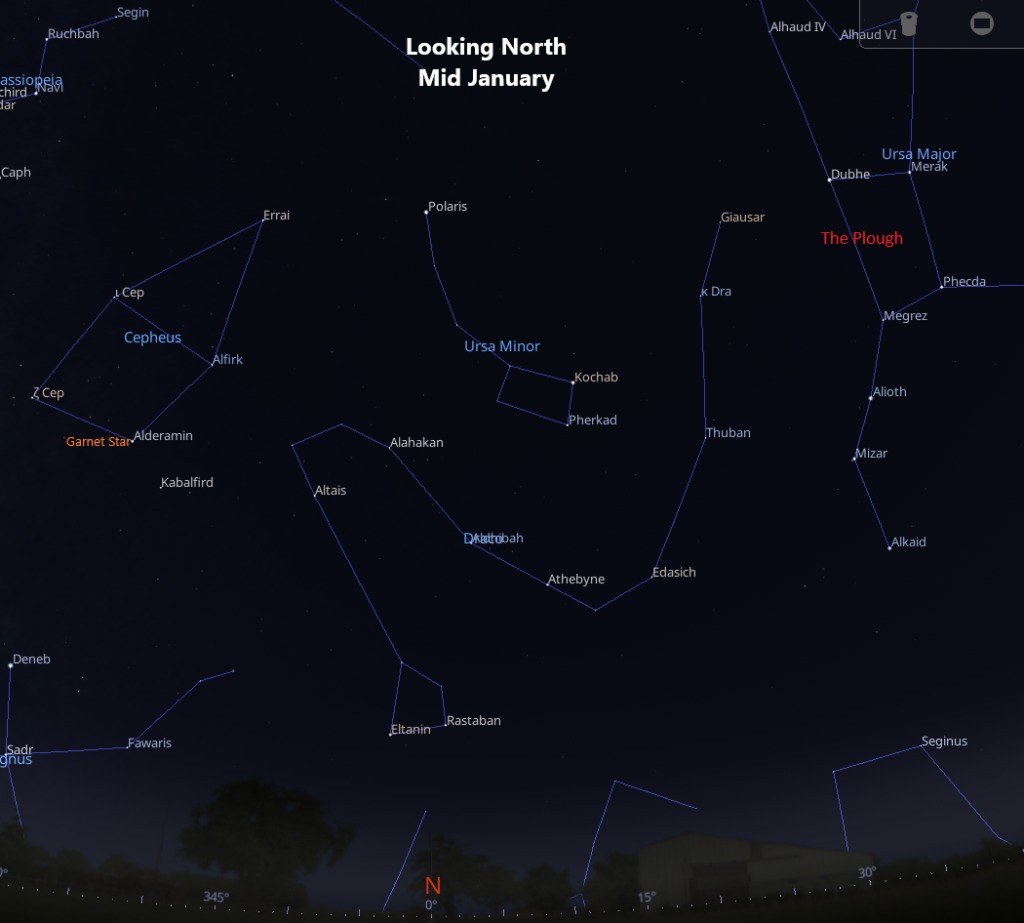Our Dark Sky Advisor for Cranborne Chase International Dark Sky Reserve, Steve Tonkin, guides you through the highlights of the January sky.
In the southern sky, unmistakably reddish Mars is at its brightest on the 16th, when it is at opposition (opposite side of Earth to the Sun).
In the northern sky, the brightest seven stars of Ursa Major, the Greater Bear, form and asterism (informal group of stars) variously known as the Plough, the Big Dipper, the Saucepan and, in ancient times, the Wagon. It’s standing on its shaft (Plough, Wagon) or handle (Saucepan, Dipper). It has been used from antiquity for navigation – the Greek poet Homer wrote that to reach the Pillars of Herakles (Straits of Gibraltar), you must keep the Wagon on your right.

We can use it in a different way: the two uppermost stars, Merak and Dubhe, are called “the Pointers” because they point to Polaris, the North Star, a hand-span away. Polaris is almost exactly in line with Earth’s axis of rotation, so it always lies above the north point on the horizon. From this we can ascertain direction, one of the three things we need for basic navigation.
Polaris has not always been the “pole star”: earth’s axis of rotation has a wobble with a period of about 26,000 years, and at the time the Egyptian Pyramids were built, the pole star was Thuban.
A little further on we meet Errai, one of the five bright stars in Cepheus, which has the shape of a primitive drawing of a house. In mythology, Cepheus was the wife of Cassiopeia and father of Andromeda, both of whom we met last month. One of the most beautiful sights in this constellation is “the Garnet Star”. Try it in binoculars and see if you agree with William Herschel’s description: “very fine deep garnet colour and a most beautiful object, especially if we look for some time at a white star before we turn to it.”
Clear skies!
Find out more about Cranborne Chase International Dark Sky Reserve.
